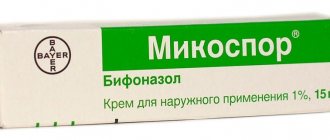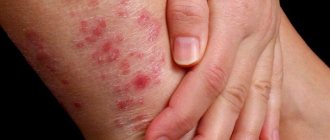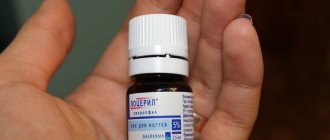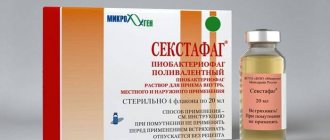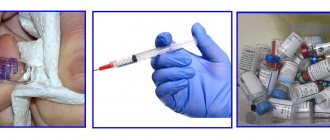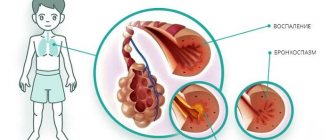What does Dioxidin help with?
A solution for intravenous administration is prescribed for:
- sepsis;
- purulent-inflammatory processes in the brain.
The medicine for intracavitary use is effective for:
- inflammation of the bladder;
- purulent pleurisy;
- purulent processes in the gallbladder.
The product for local and external application can be used for the following problems:
- burns, wounds, ulcers;
- deep purulent cavities.
Release form, composition and packaging
The main active ingredient is hydroxymethylquinoxaline dioxide, which is a synthetic antibiotic. It is diluted in a ratio of 1 to 10 with distilled water. The drug contains no dyes, preservatives or flavors, so the risk of an allergic reaction is minimal.
Dioxidin drops are produced in the form of a transparent solution without impurities and odor. The drug is offered in 10 ml transparent glass ampoules. For children, you can use a less concentrated drug of 0.5%. One cardboard box contains 10 or 20 ampoules, instructions for use.
How to use Dioxidin for gargling
The active substance of the drug can kill infections in the throat and takes part in the restoration of the mucous membrane. The solution is used to rinse the mouth for diseases such as sore throat and pharyngitis. It is necessary to mix the contents of the ampoule with 200 ml of purified water. After this, you can gargle for a few seconds. The solution must be used completely. 3-4 procedures can be performed per day. The duration of the therapeutic course is up to 5 days. Only a specialist can extend the appointment or prescribe a repeat course after examination.
Dioxidin, 5 mg/ml, solution for infusion and external use, 10 ml, 10 pcs.
Ointment
Locally. Apply a thin layer to the affected area once a day. Course - up to 3 weeks.
Solution for infusion and external use, 5 mg/mg
IV,
drip. In severe septic conditions, the drug solution is administered, previously diluted in a 5% dextrose solution or in a 0.9% sodium chloride solution to a concentration of 0.1–0.2%. The highest single dose is 300 mg, the daily dose is 600 mg.
Externally
— deep wounds are packed or irrigated with a solution daily or every other day, depending on the condition of the burn wound and the course of the wound process. The maximum daily dose is 2.5 g. Duration of treatment is up to 3 weeks.
Solution for intracavitary and external use 10 mg/ml
Externally, intracavity.
Dioxidin® is prescribed in a hospital setting.
Dioxidin® 1% solution cannot be used for intravenous administration due to the instability of the solution when stored at low temperatures.
Intracavitary administration.
Depending on its size, 10 to 50 ml of a 1% Dioxidin® solution is injected into the purulent cavity per day. Dioxidin® solution is injected into the cavity through a catheter, drainage tube or syringe. The maximum daily dose for administration into cavities is 70 ml of a 1% solution. The drug is administered into the cavity usually once a day. According to indications, it is possible to administer a daily dose in two doses. If well tolerated, the drug can be administered daily for 3 weeks or more. If necessary, repeat courses are given after 1–1.5 months.
External use.
Use 0.1–1% solutions of Dioxidin®. To obtain 0.1–0.2% solutions, ampoule solutions of the drug are diluted to the desired concentration with a sterile 0.9% sodium chloride solution or water for injection.
To treat superficial infected purulent wounds, apply napkins moistened with a 0.5–1% solution of Dioxidin®. After treatment, deep wounds are loosely tamponed with napkins moistened with a 1% solution of Dioxidin®, and if there is a drainage tube, 20 to 100 ml of a 0.5% solution of the drug is injected into the cavity.
For the treatment of deep purulent wounds with osteomyelitis (wounds of the hand, foot), use 0.5–1% solutions of the drug in the form of baths or carry out a special treatment of the wound with a solution of the drug for 15–20 minutes (injection of the solution into the wound for this period) followed by application dressings with 1% Dioxidin® solution.
Dioxidin® in the form of 0.1–0.5% solutions can be used to prevent and treat infections after surgery. According to indications (patients with osteomyelitis) and if well tolerated, treatment can be carried out daily for 1.5–2 months.
Pharmacokinetics
When interacting with pathogenic microbes and bacteria, the membrane is destroyed, the nutrition and vital activity of the pathogen stops. The drug does not contain alcohol, so if it gets on the mucous membranes it does not cause a painful burn. Restrains the spread of anaerobic infection through the nasopharynx and respiratory tract.
The antibacterial component penetrates the bloodstream through the mucous membranes and passes through the tissues and lymph nodes of the body. A high concentration is recorded 5–6 hours after application. The substance does not react with enzymes and is excreted practically without changes or metabolism.
Read more Soothing drops Valemidin - instructions and reviews
Reviews about Dioksidin
Reviews about Dioxidin are quite contradictory. Most patients to whom it was prescribed describe the drug as a very effective remedy, especially for diseases accompanied by a purulent-septic process .
Negative reviews are due to the fact that the drug is quite toxic (its therapeutic dose is only slightly less than the toxic one), and its use is often accompanied by unwanted side effects.
Reviews of the ointment allow us to conclude that Dioxidin in this dosage form does not cause irritation to the skin, stimulates tissue healing and generally has a beneficial effect on the wound process, however, with prolonged use, microorganisms develop resistance to the drug.
Dioxidin is used primarily as a reserve agent, that is, its help is resorted to only in extreme cases.
The instructions clearly indicate that the drug is intended exclusively for the treatment of adult patients, but it is often used to treat otolaryngological diseases in children.
Despite the fact that Dioxidin does not have an evidence base that would confirm the safety of its use in pediatrics, nasal drops, according to reviews left on the Internet, are a fairly effective remedy for such forms of pathological runny nose as, for example, purulent rhinitis .
Meanwhile, Dioxidin is not included in the standards for the treatment of ENT diseases , and there is no official data on its use as nasal drops. Thus, when prescribing this drug to a child, both the doctor and parents (if they agree with the prescribed treatment regimen) act at their own peril and risk.
It should be noted that until now, the use of the medicine has not been associated with any complications or negative consequences for the child’s body.
Storage conditions and periods
In a sealed ampoule, Dioxidin can be stored for up to 2 years from the date of production at room temperature not higher than 25° C. If the drug is in a cool room, it changes structure and crystallizes. To restore the liquid state, the drug is heated in a water bath.
Read more How to take motherwort drops
The drops do not contain a preservative. After opening and preparing the solution, the ampoule must be used completely and not left for storage. Otherwise, the therapeutic effect disappears.
Efficiency: proven!
Dioxidin is one of the well-studied drugs that have proven their effectiveness in large-scale clinical trials. Experiments to study the activity of the antiseptic were carried out on the basis of 24 domestic medical institutions of various profiles. The drug was tested by infectious disease specialists, urologists, surgeons and, of course, otorhinolaryngologists - ENT doctors. More than six thousand volunteers took part in the overall study.
The results of the experiment showed that Dioxidin is highly effective, including in severe purulent-infectious processes, as well as immunity - resistance of bacteria to the action of antibiotics.
Research data shows that the medicine works in 75–91% of cases. Therefore, when used locally or intracavitarily, when side effects and toxicity inherent in the injection form practically do not appear, Dioxidin is considered one of the most effective antiseptics.
Analogues and cost
If a patient is allergic to the main substance, it is necessary to select an analogue that is safe for the body. Among the drugs with a similar principle of action are:
- Diquinoxide;
- Urotravenol;
- Dioxysept.
These are powerful broad-spectrum antibiotics used to treat diseases of the nasopharynx affected by staphylococcus, streptococcus or Pseudomonas aeruginosa.
The cost of Dioxidin medicinal drops depends on the dosage and percentage of the main component.
The average price for 10 ampoules of a 1% solution is 620–671 rubles. A package of 0.05% medicine can be purchased for 450–470 rubles.
Many pharmacies dispense the drug individually, allowing the patient to save on treatment.
Dioxidine price, where to buy
The price of Dioxidin differs depending on the form of release of the drug. For example, the average price of Dioxidin in ampoules with a concentration of hydroxymethylquinoxaline dioxide 0.5% (this form is used for preparing nasal drops) is 547 rubles.
The cost of packaging ampoules with a 1% solution is from 477 to 795 rubles (depending on the manufacturer and the number of ampoules in the package). Ointment for external use can be purchased for approximately 385 rubles.
- Online pharmacies in RussiaRussia
- Online pharmacies in UkraineUkraine
- Online pharmacies in KazakhstanKazakhstan
ZdravCity
- Dioxidin solution intravenously and externally.
approx. 1% 10ml 10 pcs. JSC Novosibkhimpharm 602 rub. order - Dioxidin ointment 5% 30g Biosynthesis OJSC
RUR 446 order
- Dioxidin solution for intravenous administration. and local approx. 0.5% 10ml 10 pcs. JSC Novosibkhimpharm
RUR 537 order
Pharmacy Dialogue
- Dioxidin ointment (tube 5% 30g) Biosynthesis OJSC
RUR 397 order
- Dioxidin (amp. 0.5% 5 ml No. 10)Novosibkhimpharm OJSC
RUR 557 order
- Dioxidin (amp. 1% 5 ml No. 10)Novosibkhimpharm OJSC
486 rub. order
- Dioxidin (amp. 1% 10ml No. 10)Novosibkhimpharm OJSC
RUR 644 order
- Dioxidin (amp. 0.5% 10ml No. 10)Novosibkhimpharm OJSC
RUR 569 order
show more
Pharmacy24
- Dioxidin 1% 10 ml No. 10 solution
193 UAH. order
PaniPharmacy
- Dioxidin ampoule Dioxidin solution d/in. 1% amp. 10ml No. 10 Ukraine, Farmak OJSC
219 UAH. order
show more
Side effects
Clinical studies have proven that the drug provokes gene mutation in the embryo. Therefore, the medicine is prohibited for treating women during pregnancy. Among the negative manifestations that occur in patients when using Dioxidin drops:
- dizziness;
- the appearance of itching on the mucous membranes after instillation into the nose;
- feeling of weakness;
- fever with chills.
In rare cases, skin irritation and dermatitis around the nasal passage may occur. With the correct dosage and careful use, side effects are extremely rare.
pharmachologic effect
The drug Dioxidin combines the properties of an antibiotic and an antiseptic and is recommended for topical use in the treatment of complicated runny nose. After instillation into the nose, it suppresses the growth of pathogenic microflora on the mucous membranes and reduces the rate of spread of infection. The solution is effective against the following groups of microorganisms:
- coli;
- streptococci;
- proteas;
- clostridia;
- pseudomonas.
Among the positive qualities of Dioxidin drops is an active effect against bacteria that have developed resistance to other types of antibiotics.
When instilled, the active substance quickly penetrates the upper layer of the epithelium, destroys cell walls, stopping the growth and development of the pathogen. It begins to act after the first use, maintaining high effectiveness for 4-6 hours after the procedure.
Contraindications
Drops are not recommended for use if you are hypersensitive to the main active ingredient. Among the main contraindications indicated by the drug manufacturer:
- pregnancy;
- renal failure.
If the patient is a child under 18 years of age, the need to use drops is determined by the attending pediatrician or otolaryngologist. The caution is associated with the lack of reliable information about safety in childhood.
With caution, Dioxidin in the nose is prescribed to an adult patient for adrenal dysfunction. The medicine can provoke a severe exacerbation and disrupt hormonal levels.
